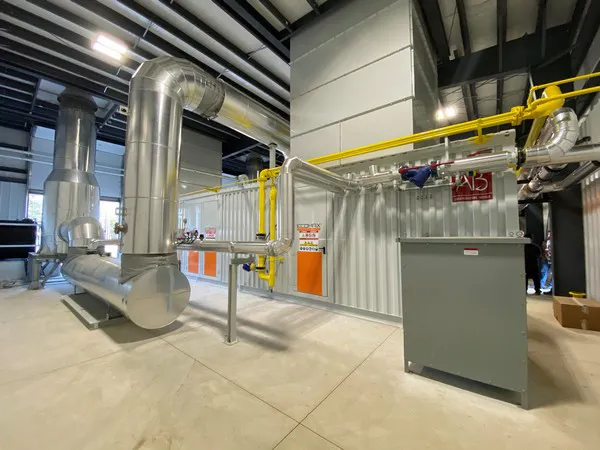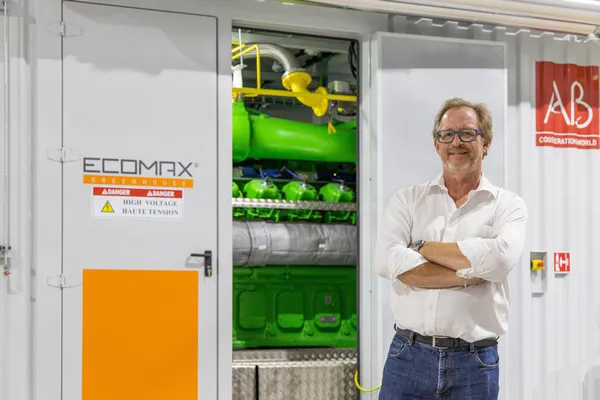A Canadian greenhouse, eNature Greenhouses, has installed two cogeneration plants with a total capacity of 5.4 MW (2 engines of 2.7 MW each). eNature is a cucumber grower in Carlisle, Ontario that saw an opportunity to participate in a CHP Standing Offer Program (CHPSOP). Under this program, anytime the cost of electricity in Ontario is higher than the cost of producing electricity by the CHP plant, the cogeneration plant will supply electricity into the Ontario grid. Under the CHPSOP program rules, all electricity produced must be exported into the Ontario grid.

Although eNature feeds 100% of the electricity to the local grid, thermal energy recovered from the CHP plant will be utilized in the greenhouse. Should there not be any demand for heat in the greenhouse, while the electricity price in the grid is high enough for the plant to run, heat recovered from the engines is stored in a large buffer tank and can then be used at a later time.
The benefits of the CHP units are a significant production cost reduction, a higher revenue due to the electricity sold to the grid, and the possibility to use the by-product (heat) from the cogeneration system, achieving a very high system efficiency.
Energy to heat the greenhouse
The energy produced by these power plants can have different applications: the electricity can be used for grow lights, general load, and in addition or as an alternative, can be exported to the grid to create an additional income stream, as in this case; the produced heat will be used to heat the greenhouse or converted into chilled water for cooling and dehumidification purposes, while the CO2 present in exhaust gases be used as a fertilizer, to promote plant growth.

Hans van de Heuvel en Dick Kramp

Jan Buijk
Many CHP systems are designed to also support the greenhouse operations during grid outages, as they are capable of supplying emergency power to the greenhouse by running isolated from the grid.
The AB-designed master and grow light controls secure seamless operation, also in combination with other energy sources like energy storage and solar arrays. The AB greenhouse application and its controls can also create a microgrid that provides maximum resiliency.
The treatment of emissions into the atmosphere can be managed by controlling pollutants in order to reduce the environmental impact, combining attention to the environment with increased competitiveness.
For more information: Gruppo AB
Gruppo AB
Dick Kramp
[email protected]
[email protected]
www.gruppoab.com
